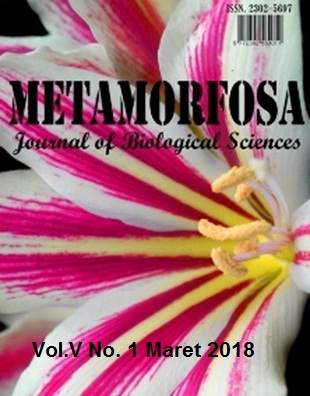THE STUDY OF HISTOPATOLOGY GILL TILAPIA (Oreochromis niloticus, Linn.) IN TERMS OF LEVELS OF AMMONIA (NH3) IN BATUR LAKE, BALI
Abstract
Danau Batur merupakan danau terbesar di Pulau Bali yang berada di Kecamatan Kintamani, Kabupaten Bangli. Insang ikan Nila digunakan sebagai indikator karena merupakan organ yang sangat sensitif terhadap perubahan kualitas air. Penelitian bertujuan untuk mengetahui kondisi lingkungan perairan dan gambaran histopatologi insang Ikan Nila ditinjau dari kadar Ammonia (NH3) di Danau Batur. Penelitian dilaksanakan pada bulan Januari hingga Maret 2016 dengan metode yang digunakan adalah observasi langsung dan purposive sampling pada 5 Stasiun di Danau Batur. Analisis histopatologi dilakukan di laboratorium histopatologi, Balai Karantina Ikan dan pengendalian Mutu kelas 1 Denpasar, Bali. Sampel histopatologi insang dianalisa melalui proses isolasi, fiksasi, dehidrasi dan pembenaman pada paraffin dan pewarnaan dengan Haematoxylin-Eosin. Hasil kualitas air menujukkan nilai pH 8,71-9,08, nilai suhu 25,4-30,0°C, kadar DO 3,8-5,1 mg/L yang masih sesuai pada ambang baku mutu kelas III untuk kegiatan perikanan, sedangkan kadar NH3 0,027-0,105 mg/L berada di atas nilai ambang baku mutu air kelas III untuk kegiatan perikanan mengacu pada PP Nomor 81 Tahun 2001 tentang Pengolahan Kualitas Air dan Pencemaran Air. Hasil pengamatan histopatologi memperlihatkan adanya perubahan yang ditinjau dari kadar NH3. Perubahan yang terjadi pada insang berupa fusi, hiperplasia, apoptosis, telengiektasis dan haemoragii.





